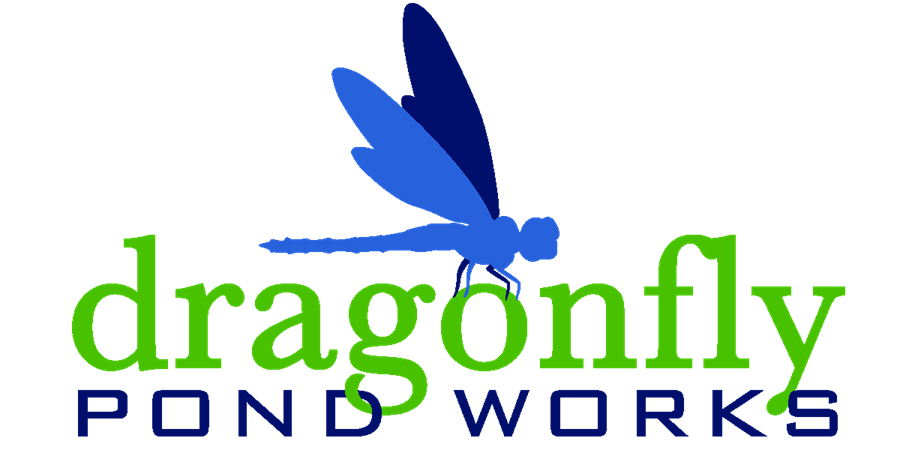Stormwater Pond Maintenance Leaders in North Carolina, South Carolina, Florida, and Beyond!
Specialized stormwater pond maintenance is critical to the health and function of your aquatic system.
As an experienced lake and stormwater pond maintenance company, we often receive inquiries regarding the process a basin goes through from construction to finished stormwater system, including inspections and the importance of maintenance. We strive to be clear with clients on these steps and expectations for their system. Especially important is understanding the difference between routine maintenance and repairs.
Process: Construction to Engineer Certification
The system starts out as a sediment catch basin during construction. This is a temporary pond intended to capture displaced soil and pollutant runoff during a rain event on a construction site.
Once construction of the development is completed, the basin is converted from the sediment basin to the stormwater pond. At this point, Dragonfly Pond Works enters the process.
As part of the conversion, Dragonfly may complete removal of excess sediment, surveying, grading and compaction, installation of any necessary piping and/or riser, planting of wetland plants, and stabilization of slopes.
A professional engineer then certifies the pond has been built to plan and responsibility of the stormwater pond is transferred from the developer to the community. Regular stormwater pond maintenance will be necessary after this point
Before: Overgrown basin in a newer housing development.
After: Immediately following Dragonfly's conversion to a healthy, compliant stormwater system.
Process: Annual Inspections
Once the stormwater pond is turned over to the community, it is subject to an annual inspection by a certified stormwater inspector.
Yearly inspections will identify any deficiencies that need to be addressed in order to keep the pond functioning properly and thus compliant with local regulations.
With certain types of repairs (erosion, bare soil, additional planting, or clearing of vegetation) it is typically better to wait for the engineer to call during the inspection before we make any repairs. This is due to the fact that severe weather events may impact the pond/repairs prior to the inspection and they will then have to be remedied again.
Damage to any structures or catastrophic events can be fixed before the annual stormwater inspection because they are likely to be identified by the inspector and less likely to impacted by weather. This includes leaks in risers, joint separations, formation of sinkholes, and areas of washed out riprap.
Example of a sinkhole, which would be identified in our stormwater pond maintenance report and recommended to address even prior to inspection.
Process: Monthly Stormwater Pond Maintenance
Monthly maintenance of stormwater ponds will help identify issues before they worsen.
Utilizing specialized stormwater pond maintenance crews, such as Dragonfly, will help keep the system functioning as intended and avoid excess costs in restoration and fines. Non-specialized crews may inadvertently cause issues, such as allowing invasive plants to thrive or cutting beneficial plants.
Along with routine maintenance, such as treating invasive vegetation, trash removal, and removal of accumulated sediment, stormwater ponds are also looked over to spot any other issues that may impact health, function, and system compliance.
Preventive maintenance is intended to be more proactive and thus reducing costs of inspection repairs after the annual stormwater inspection is conducted. Issues that are allowed to worsen over time will be more costly to repair.
Monthly stormwater maintenance does not include any of the necessary repairs, however, it will allow the community to proactively plan for and address issues as they are noted.
Following each maintenance service, the Dragonfly team provides clients with a report complete with pictures. The report highlights services completed and notes any potential issues spotted.
It is important for communities to factor eventual repair costs into their budgets. All stormwater systems will eventually have issues that will need to be addressed. Paying attention to noted items on our monthly reports and budgeting will help clients avoid violations and issues worsening.
Stormwater Maintenance Report Examples:
The following are brief excerpts from two different stormwater pond maintenance reports. Completed services and issues are noted. Both reports include numerous photographs; one example from each report is included here.
"Removed the trash from the system. Added dye to the pond. Cleaned the fountain debris screen. Noted image 1 shows the fountain before it was cleaned. Image 2 shows the fountain float after it was cleaned. Noted image 3 shows the fountain after the service. Image 4 shows erosion and exposed fabric around the additional inlet."
Image 4 noting erosion and exposed fabric.
"Removed trash from the system. Image 1 shows a pipe separation in the primary inlet. Image 2 shows an additional inlet. A large amount of sediment deposition observed at the mouth of the additional inlet."
Image 1 of pipe separation
At Dragonfly Pond Works, we strive to develop long-term relationships based on quality work, timely service, cost-efficiency, and of course trust. We aim to be as clear as possible with clients regarding expectations for their stormwater systems and our processes. Our monthly maintenance reports are just one more measure we take to provide clients with a customized, premier experience. Please contact us to learn how we can help maintain your beautiful space.
Stormwater Pond Maintenance and More!
Learn about our utilization of Integrated Pest Management as part of a comprehensive lake or pond maintenance plan. This Algae Control case study illustrates how we customize plans to fit the needs of your specific system.
Like us on Facebook, Twitter, Instagram, and LinkedIn for news, events, engaging photos, and more!
In addition to lake and pond maintenance, Dragonfly Pond Works provides stormwater management, dredging, erosion repair, and more in Raleigh, Durham, Cary, Charlotte, Wilmington, North Carolina, Myrtle Beach, Charleston, Columbia, South Carolina, Tampa, Sarasota, Naples, St. Petersburg, Fort Myers, Florida, and Atlanta, Georgia.






